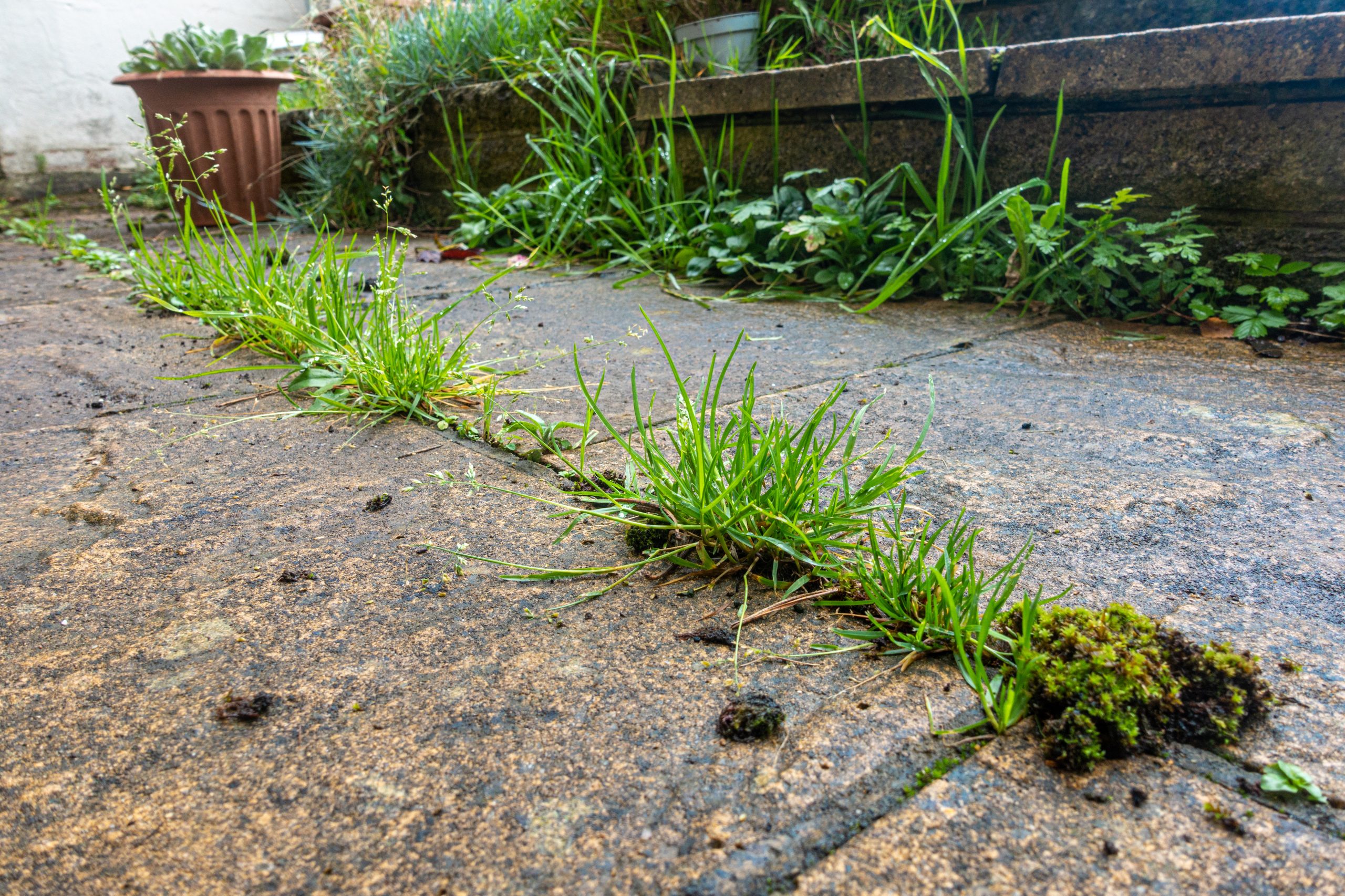
In Brighton, down the road from our HQ, the battle over weeds continues with Labour councillor Tim Rowkins in March 2024 estimating that the council now faces £60 million worth of repairs to pavements damaged by weeds:
Untreated weeds fuel £60 million pavement repairs backlog – Brighton and Hove News
The council stopped using the herbicide glyphosate (also known as Roundup) back in 2019 and, since that time, the weeds have run wild, causing extensive damage to pavements which are proving a hazard to local residents, a number of whom have tripped and fallen while others have found it impossible to manoeuvre mobility vehicles, wheelchairs and buggies along them.
Having tried big weed ripping machines and manual weeding (staff are reported to be suffering from repetitive strain injury with the latter and can only do the work for two hours), Brighton has decided that it has no choice but to bring back herbicide usage, this time using controlled droplet application (CDA) spraying methods which it claims can greatly reduce the amount of glyphosate used.
Brighton’s experience echoes that of Cardiff City Council which trialled alternative methods of weed control in 2021. They tried the New Way Weed Spray (an acetic acid based product) and Foamstream which uses hot water and a biodegradable foam. The independent report concluded that:
Glyphosate is “the most effective and sustainable weed control method currently available”.
The scientific trial found that glyphosate had a smaller overall environmental footprint than the two alternatives trialled and was also the least expensive product tested and ranked highest for customer satisfaction. Read the council’s conclusion here.
Given the evidence suggests that glyphosate is the only really viable solution to weed control on a large scale at the moment, why not employ methods to reduce its usage while retaining its effectiveness?
Brighton are on the right track with CDA spraying. However, the best method is using equipment which uses CDA technology combined with ULV technology.
What do all these acronyms mean?
What is the difference between CDA sprayers with ultra low volume (ULV) capability (we call them CDA/ULV sprayers), CDA-only methods and ‘normal’ methods of application?
CDA/ULV sprayers will typically spray the neat undiluted herbicide. When applying something like glyphosate 480 with a conventional sprayer, you would heavily dilute the chemical with water at least 20:1 and above. The level of dilution will depend on your overall spray rate from your sprayer. In some situations, you will be spraying up to 250 litres of liquid per hectare to deliver 3 or 4 litres of active ingredient. To learn more about the differences, click below.
Is it really possible to use less herbicide such as glyphosate with these technologies?
CDA / ULV sprayers have a much lower flow rate that allows the neat chemical to be sprayed without bulking it up with water. So, you can deliver just the active ingredient sprayed neat. This is impossible with conventional sprayers because they cannot get down to the incredibly low flow rates required. It is also impossible with simple CDA sprayers for the same reason. With basic CDA sprayers the active ingredient still needs to be diluted, not as much as with standard sprayers, but it cannot be sprayed neat because a standard CDA sprayer will not be able to get down to the very low spray volumes required for neat spraying. Only a CDA/ULV sprayer will do this.
To explain how this is possible we need to look at the characteristics of the sprays produced.
The first important characteristic is that the ULV/CDA overall volume of spray per unit area is much lower; sometimes as much as 250 times less actual fluid is sprayed. This means that there is far less opportunity for any liquid to flow off the weeds it hits. Very small volumes of liquid will not have a chance to agglomerate and flow away, they will stick to the leaves much better. This dramatically reduces run off.
The next characteristic is droplet size or, more precisely, the range of drop sizes produced. CDA sprayers will be configured to deliver drop sizes of between 140 and 160 microns. This is an ideal balance between having droplets small enough to penetrate foliage and stick to the leaves but not being so small that they are wafted off target by any winds.
Conventional sprayers will have a much broader range of drop sizes; there will be some droplets that are much bigger than the 150-micron average desired size and some that are much smaller. CDA spraying confines almost all the spray volume to that 140–160-micron range, there are almost no bigger or smaller droplets. Big droplets tend to bounce or roll off leaves and smaller droplets tend to waft off target. This means that even though the average droplet sizes might be the same, the CDA spray, with its narrow spectrum of droplets, will be absorbed far more readily and stay on target better.
Up to an 80% reduction in glyphosate usage
So yes, CDA/ULV spraying does reduce herbicide usage and quite considerably. The combination of the two technologies means that CDA/ULV spraying can generally do the same job using only a fraction of the amount of herbicide used in conventional spraying and still significantly more than can be achieved with CDA technology alone. Almost all the glyphosate gets absorbed so far less is wasted. This means that the same weed killing power can be delivered by using often around 20% of the chemical that would be used through conventional sprayers.
Isn’t it time that an open debate was had? While glyphosate is still the only viable alternative to large scale weed control, let’s use less of it!
Watch our short video below to learn more.
For further reading on glyphosate and its use for treating Japanese knotweed, click here.
